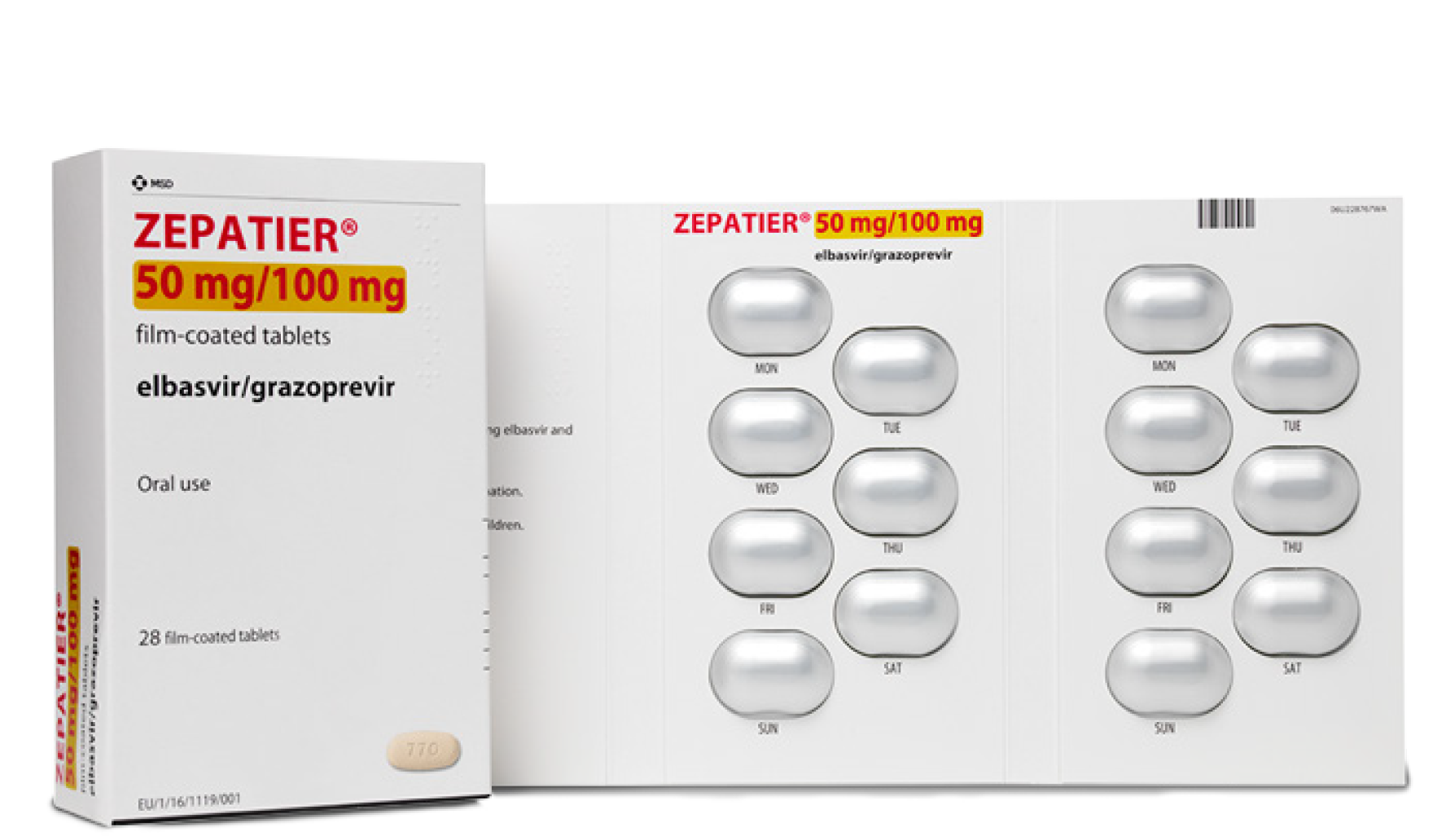Why ZEPATIER – DDIs and dosing
ZEPATIER® (elbasvir/grazoprevir)
Drug-drug interaction and dosing
Prescribing Information (Great Britain) & Prescribing Information (Northern Ireland) [External links]
ZEPATIER can be used with the following drugs without clinically significant interactions or dose adjustments2
ZEPATIER is indicated for the treatment of chronic hepatitis C (CHC) in adult and paediatric patients 12 years of age and older who weigh at least 30 kg.
Please consult the ZEPATIER SmPC before prescribing.

Opiate substitution therapy
(methadone, buprenorphine/naloxone)

Oral contraception
(ethinyloestradiol/levonorgestrel)
Other categories without clinically significant interactions or dose adjustments include: antiarrhythmics (digoxin), beta blockers, gastric acid suppressants (H2-receptor antagonist (famotidine), Proton Pump Inhibitor (pantoprazole), antacids), HBV and HIV NRTIs, HIV NNRTIs (rilpivirine), HIV integrase inhibitors (raltegravir and dolutegravir), HCV antivirals (sofosbuvir and ribavirin), immunosuppressants (prednisone, mycophenolate mofetil), phosphate binders (calcium acetate, sevelamer carbonate) and statins† (pitavastatin, pravastatin).
Please consult the ZEPATIER SmPC before prescribing.
†Other statins (HMG-CoA reductase inhibitors) – use low dose when concomitantly given with ZEPATIER2
Glucose levels of diabetic patients initiating direct-acting antiviral therapy should be closely monitored, particularly within the first 3 months, and their diabetic medication modified when necessary
Contraindications
Hypersensitivity to the active substances or to excipients: tablet core (sodium laurilsulfate, vitamin E polyethylene glycol succinate, copovidone, hypromellose, microcrystalline cellulose, mannitol (E421), Lactose monohydrate, croscarmellose sodium, sodium chloride, colloidal anhydrous silica and magnesium stearate) or film-coating (lactose monohydrate, hypromellose titanium dioxide, triacetin, iron oxide yellow (E172), iron oxide red (E172), iron oxide black (E172) and carnauba wax)
Patients with moderate or severe hepatic impairment (Child-Pugh B or C).
Co-administration with inhibitors of organic anion transporting polypeptide 1B (OATP1B), such as rifampicin, atazanavir, darunavir, lopinavir, saquinavir, tipranavir, cobicistat or ciclosporin.
Co-administration with inducers of cytochrome P450 3A (CYP3A) or P-glycoprotein (P-gp), such as efavirenz, phenytoin, carbamazepine, bosentan, etravirine, modafinil or St. John’s wort (Hypericum perforatum).
Dosing2
- One tablet once daily2
- With or without food2
- Blister pack with named days2
- 12 weeks without ribavirin for the majority of G1 + G4 patients2

*Not actual size*
Recommended ZEPATIER therapy for treatment of chronic hepatitis C infection in patients with or without compensated cirrhosis (Child-Pugh A only)2

Adapted from ZEPATIER Summary of Product Characteristics2
In the clinical studies, the dose of ribavirin was weight-based (<66 kg = 800 mg/day, 66 to 80 kg = 1,000 mg/day, 81 to 105 kg = 1,200 mg/day, >105 kg = 1,400 mg/day) administered in two divided doses with food.2
- Consider 16-week ZEPATIER treatment with ribavirin for G1a patients with baseline HCV RNA level >800,000 IU/ml and/or the presence of specific NS5A polymorphisms causing at least a 5-fold reduction in activity of elbasvir to minimise the risk of treatment failure2
- ZEPATIER for 16 weeks plus RBV should be considered in G4 patients with baseline HCV RNA level >800,000 IU/ml to minimise the risk of treatment failure2
- For specific dosage instructions for ribavirin, including dose modification, refer to the ribavirin Summary of Product Characteristics
Cure defined as cure of HCV infection = sustained virologic response (SVR), the primary endpoint in all studies, was defined as hepatitis C virus (HCV) ribonucleic acid (RNA) less than the lower limit of quantification (LLOQ) (≤15 IU/ml) at 12 weeks after the cessation of treatment.3
References
- Höner zu Siederdissen C, Maasoumy B, Marra F, et al. Drug-drug interactions with novel all oral interferon-free antiviral agents in a large real-world cohort. Clin Infect Dis. 2016;62:561–567.
- ZEPATIER Summary of Product Characteristics.
- European Association for the Study of Liver. J Hepatol. 2018;69;461-511.
Supporting documentation
Prescribing Information (Great Britain) & Prescribing Information (Northern Ireland)
By clicking the links above you will leave the MSD Connect website and be taken to the emc PI portal website
